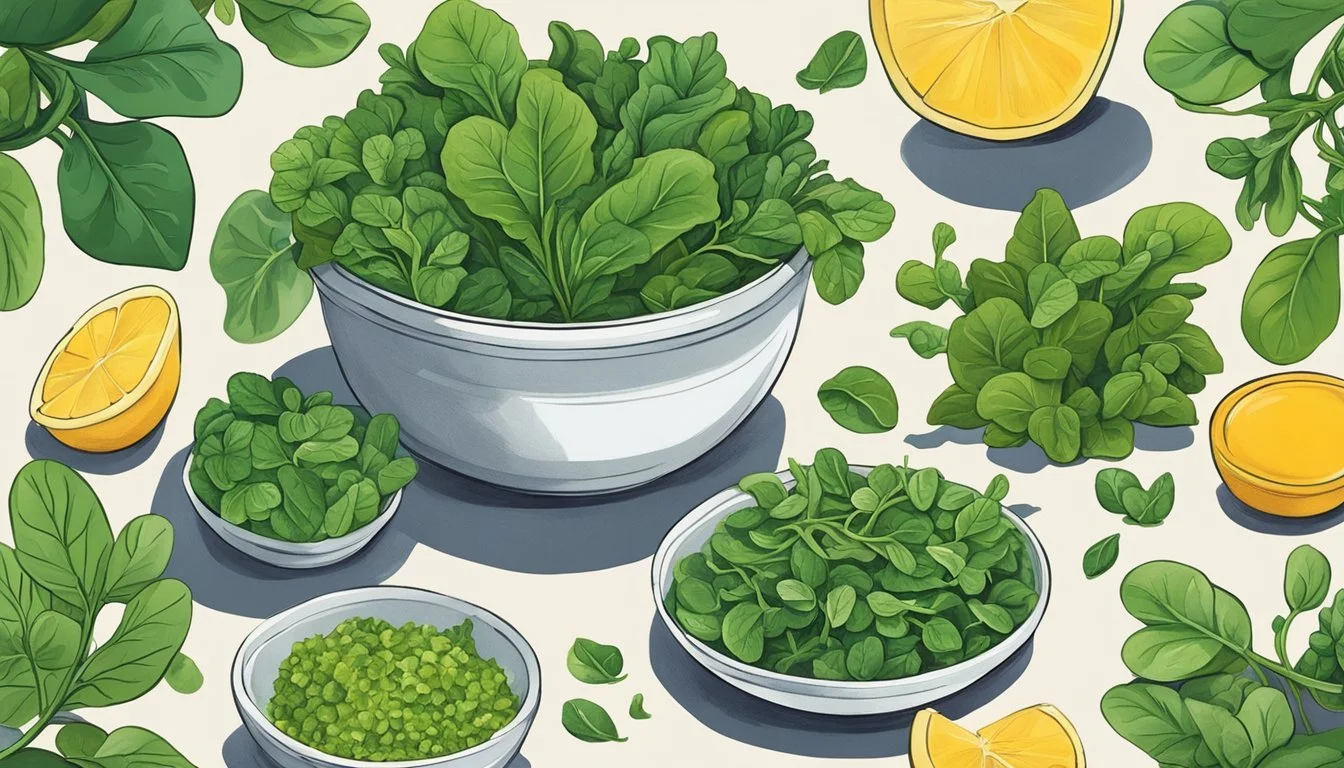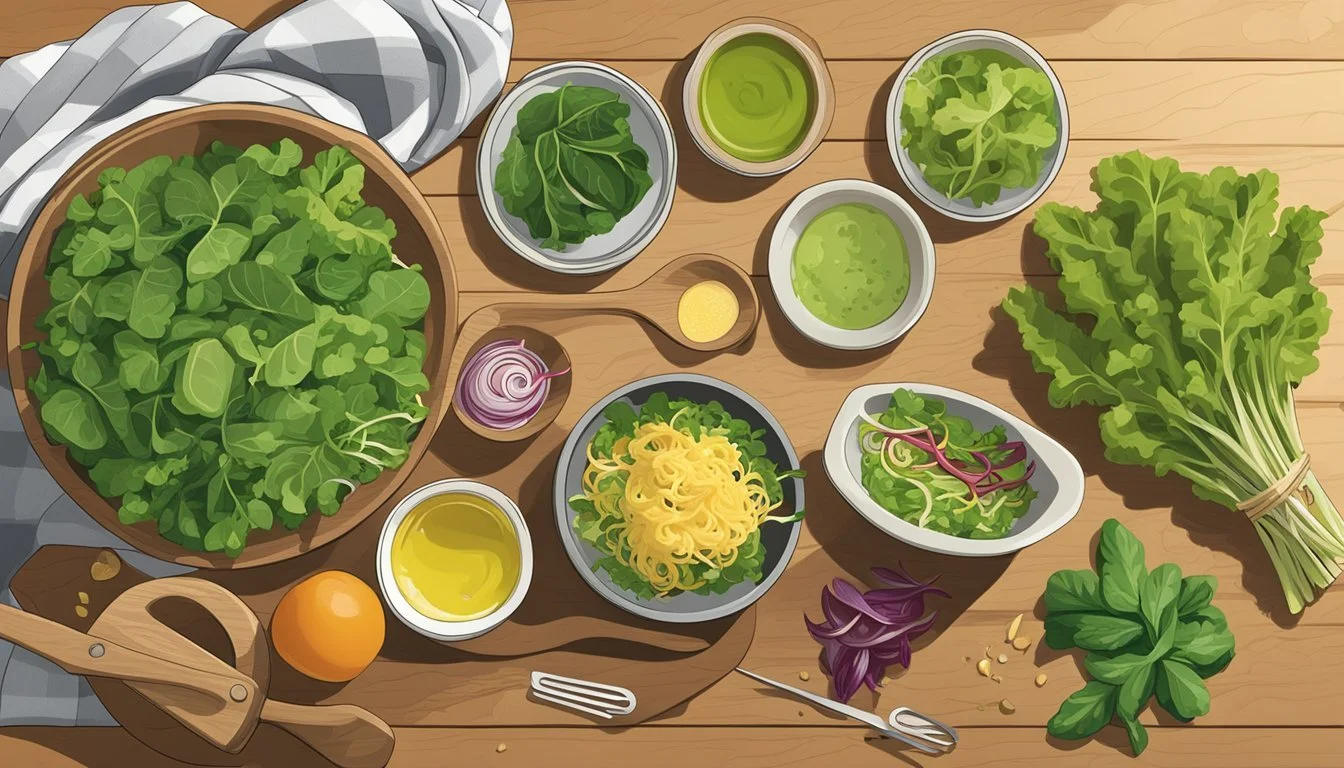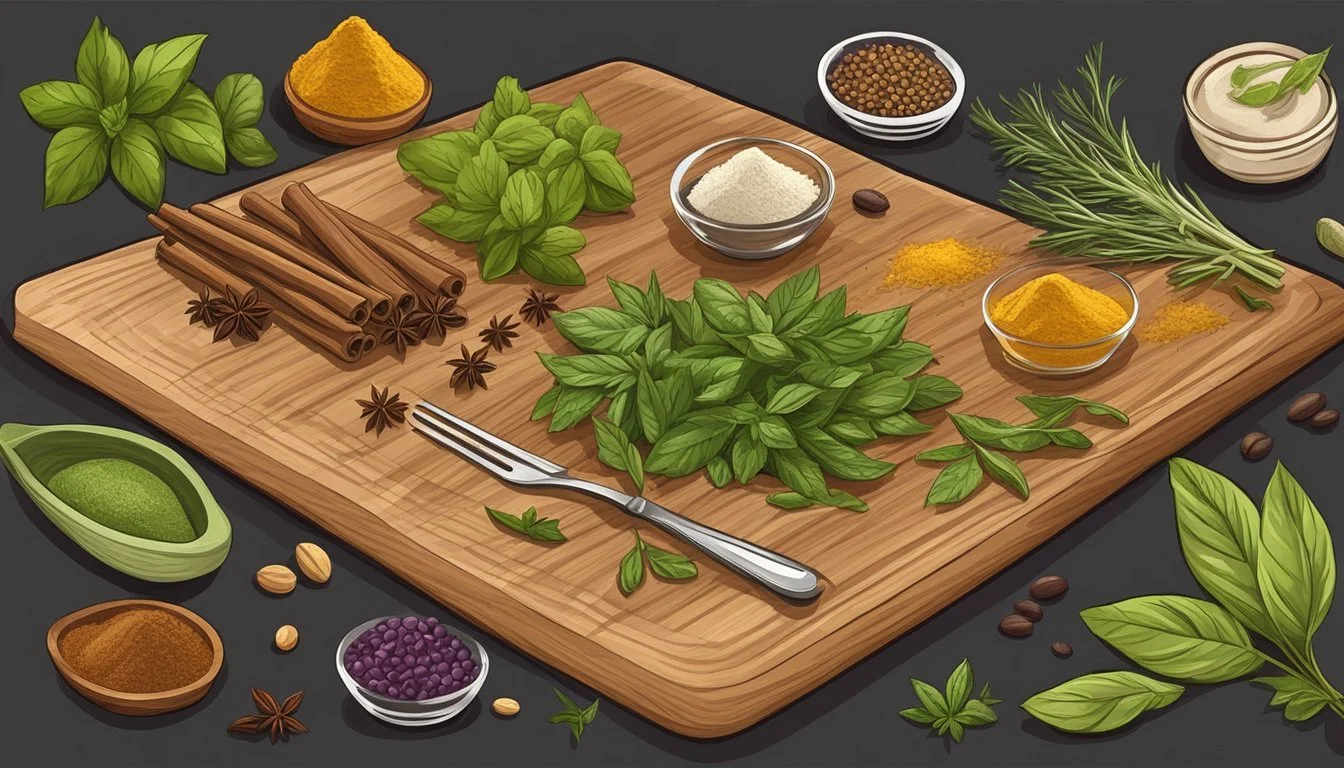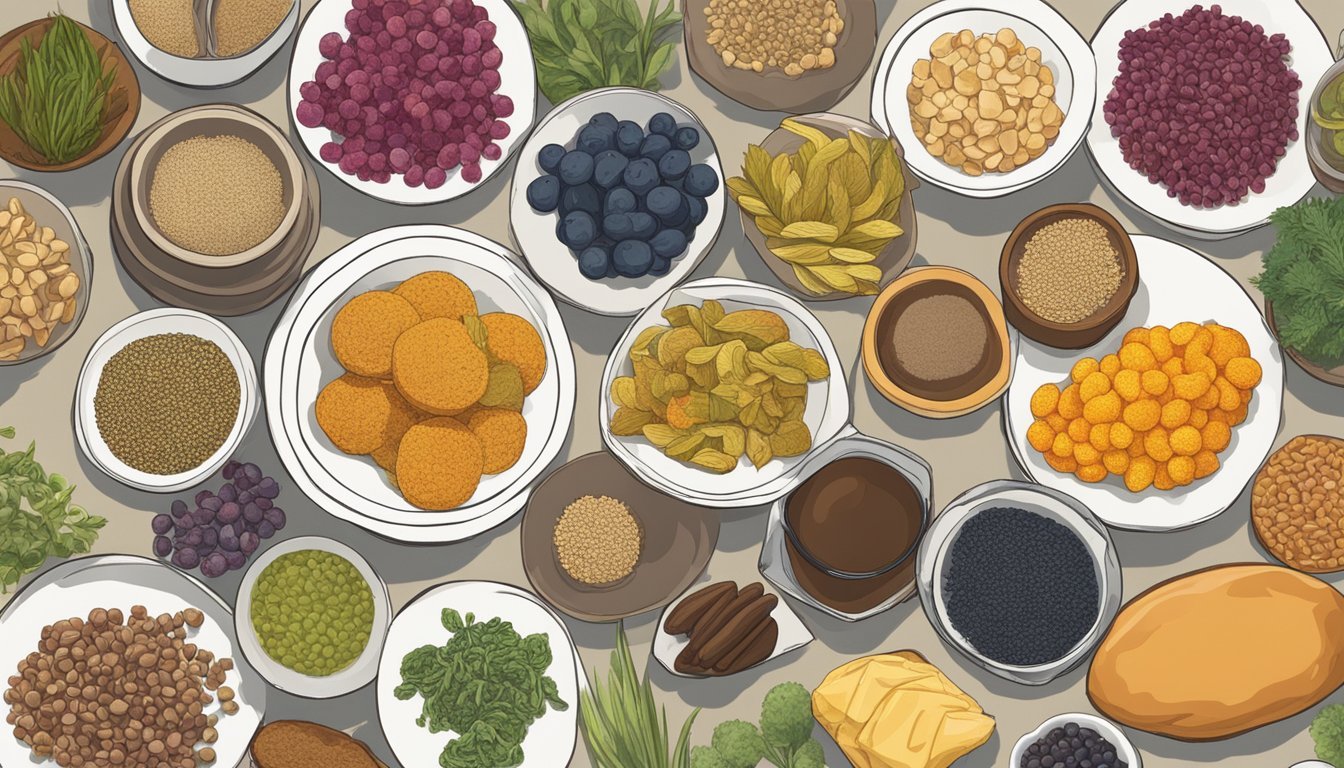Mâche Substitutes
Best Alternatives for Recipes
Finding the perfect substitute for mâche can elevate your salads and other dishes, even when this delicate green is unavailable. Known as lamb's lettuce or corn salad, mâche is prized for its mild, nutty flavor and tender texture. When mâche isn't available, arugula makes an excellent substitute with its peppery zing. This not only replicates the softness of mâche but also adds a fun, vibrant taste to your dish.
Another great alternative is baby spinach. Its gentle taste and similar nutritional benefits make it a versatile option. Nutmeg lovers may also enjoy the culinary parallels, as both spices can sometimes be used interchangeably in creative cooking solutions. This versatility ensures your salads remain diverse and flavorful.
For those seeking a more pronounced taste in their salad greens, consider using frisée or watercress. These greens offer a similar texture to mâche and provide a refreshing twist with their unique flavors. Each substitute brings its own character, ensuring you will never run out of delicious options for your plates.
Understanding Mâche
Mâche, also known as lamb's lettuce or corn salad, is a leafy green celebrated for its unique history, impressive nutritional profile, and versatile culinary uses.
Historical Context
Mâche originates from the Mediterranean region, where it has been valued for centuries. Historically, it was a common wild plant, foraged by Europeans long before it became a cultivated crop.
In France, mâche gained popularity during the Renaissance. It was often featured in royal gardens and became a staple in French cuisine. Its delicate, spoon-shaped leaves and mild, nutty flavor made it a favorite among cooks.
Today, mâche is enjoyed worldwide, celebrated for both its taste and its historical significance as a traditional European leafy green.
Nutritional Profile
Mâche is a powerhouse of nutrients. It boasts high levels of vitamins A and C, making it an excellent choice for boosting the immune system and promoting healthy skin. This leaf vegetable is also rich in iron, helping to prevent anemia.
In addition to these vitamins, mâche provides potassium, which is essential for heart health, and calcium for strong bones. The presence of folate supports cellular function and tissue growth. Mâche is also abundant in antioxidants and fiber, aiding in digestive health and reducing inflammation.
Its nutrient density makes mâche a nutritious and beneficial addition to any diet.
Culinary Uses
Mâche is incredibly versatile in the kitchen. Its tender texture and mild, nutty flavor make it a delightful component in a variety of dishes. Frequently used in salads, mâche pairs well with ingredients like avocado, citrus, nuts, and cheese.
But its uses extend beyond salads. Mâche can be added to wraps and sandwiches for a fresh, crisp element. It also works well in warm dishes; lightly wilting the greens can add a nuanced flavor to pastas and soups.
Whether raw or lightly cooked, mâche's adaptability and subtle flavor profile make it a valuable addition to various culinary creations.
Mâche in the Kitchen
Mâche, also known as lamb's lettuce, adds a delicate and nutty flavor to dishes. It can be enjoyed raw in salads or incorporated into various recipes that enhance its subtle taste.
Selecting and Storing Tips
When selecting mâche, look for bright green leaves that are free from wilting or yellowing. Fresh mâche should have a tender texture and a slightly sweet aroma. Avoid any bunches with slimy or overly soft leaves.
To store mâche correctly, wrap it in a damp paper towel and place it in a perforated plastic bag in the refrigerator. This method helps to maintain its freshness for up to 5 days. Mâche is best used soon after purchase to enjoy its optimal flavor and texture.
Preparation Techniques
Preparing mâche is simple and requires minimal effort. First, remove any damaged or wilted leaves. Rinse gently under cold water to remove any soil or grit. Dry the leaves carefully using a salad spinner or pat them dry with a clean towel.
In salads, mâche pairs wonderfully with ingredients like avocados, oranges, and nuts. For a basic salad, drizzle with olive oil and a touch of lemon juice. Mâche can also be added to cooked dishes; it wilts quickly, making it a perfect addition at the last minute in soups or warm salads.
Choosing Mâche Substitutes
Selecting the right alternative to mâche depends on factors like flavor, texture, and availability. Various leafy greens can replace mâche effectively, offering unique tastes and uses in different dishes.
Factors to Consider
When choosing a mâche substitute, consider the flavor profile. Mâche has a sweet, nutty taste that can be complemented by greens with similar characteristics. The texture is also key; mâche is tender and delicate, so a substitute should mimic this. Nutrition plays a role since many opt for mâche due to its health benefits. Finally, availability in your locale might influence your choice, as some greens are more commonly found in the United States or specific seasons.
Mâche Alternatives Overview
Arugula stands out for its peppery flavor, adding zing to salads and making each bite interesting. Baby spinach offers a milder taste and tender texture, making it suitable for those who prefer a more subdued flavor. Watercress brings a slight pepperiness and is nutritious, often used in Asian cuisine and salads. Endive and radicchio introduce a bit of bitterness along with their crisp texture, working well in mixed salad greens.
Butterhead lettuce and romaine lettuce provide a good mix of sweet flavor and crunch, making them versatile for various dishes. Kale offers a robust nutritional profile but may need to be finely chopped to match the tenderness of mâche. Escarole and dandelion greens offer a unique flavor, slightly bitter, ideal for those seeking to experiment with new tastes.
Purslane serves as another option, known for its slightly sour and salty taste, often used in salads and even seafood dishes. Each of these substitutes can provide different nuances, ensuring that the absence of mâche won't limit culinary creativity.
Incorporating Substitutes into Dishes
When using substitutes for mâche, understanding their unique flavors and textures helps enhance salads, main courses, and soups. Selecting the right replacement can elevate each dish, providing a fresh spin on traditional recipes.
Salads and Starter Recipes
For salads, arugula and watercress are excellent substitutes. Arugula, with its peppery kick, adds a vibrant taste that livens up any salad. A classic mix of arugula with vinaigrette and a sprinkle of shaved parmesan creates a delightful starter.
Watercress offers a slightly milder, more peppery flavor and pairs well with lighter vinegars and citrus dressings. Spinach and kale are also viable options, providing a robust texture and higher fiber content. Combining these greens with endive or radicchio results in a well-balanced and nutritious salad bowl.
Main Courses and Proteins
Main courses benefit from substitutes like spinach, which can seamlessly replace mâche in dishes featuring proteins such as chicken, seafood, or beef. Spinach's mild taste and soft texture complement heavier meats, especially when sautéed with garlic and olive oil.
Kale, known for its toughness, works well in baked dishes and pairs excellently with lamb or pork. It holds up well during cooking, unlike more delicate greens. Endive and radicchio can add a slightly bitter contrast that enriches the flavors of roasted vegetables and grilled meats, providing a complex taste profile.
Soups and Stews
When it comes to soups and stews, kale and spinach are top choices. Kale's hearty leaves retain their structure, making them ideal for long-simmering stews like a hearty beef or vegetable stew. Spinach, on the other hand, wilts quickly, perfect for light, broth-based soups.
Arugula can lend a unique, peppery note to clear soups and seafood chowders, enhancing the overall flavor without overpowering other ingredients. Watercress can be used in creamy soups, providing a fresh, crisp taste that balances richer and more savory elements. Including endive adds a slight bitterness, which can be particularly pleasing in robust, tomato-based soups.
Enhancing Flavor with Spices
Using spices to enhance flavors can transform a simple dish into an extraordinary one. This section explores traditional spice pairings, creative spice mixes, and tips for making homemade spice blends.
Traditional Spice Pairings
In cooking, traditional spice pairings often rely on well-known combinations that consistently deliver desirable flavors. Nutmeg and mace, both from the same nutmeg tree in the Banda Islands of the Moluccas, offer a warm, sweet profile perfect for baked goods and rich sauces. Cinnamon and allspice provide aromatic sweetness and warmth, essential in pumpkin pie spice and apple pie spice. Cloves, with their strong, pungent taste, pair well with ginger and cardamom in garam masala or holiday baking.
Creative Spice Mixes
Incorporating creative spice mixes can introduce new flavors and dimensions to cooking. Garam masala, a staple in Indian cuisine, combines cinnamon, cardamom, cumin, black pepper, and cloves for a robust, spicy mix. Pumpkin pie spice, often used in autumn recipes, blends cinnamon, nutmeg, ginger, and allspice. For a savory twist, a mix of cumin, garlic, and ginger can elevate meats and vegetables, adding depth and complexity.
Making Homemade Spice Blends
Creating homemade spice blends allows for customization and freshness, enhancing the quality of dishes. Using a spice grinder, whole spices like cinnamon sticks, nutmeg, and cloves are ground into fine powders for the freshest flavor. Blending ground spices such as ginger, cardamom, and allspice can yield unique mixes tailored to taste. For example, a blend of 2 parts ground ginger, 1 part cinnamon, and a pinch of cloves creates a versatile spice mix ideal for baked goods and curries.
Homemade blends also allow substituting rare spices with more common ones while maintaining flavor profiles, such as using nutmeg in place of mace. Creating these blends guarantees the freshest and most potent flavor enhancements in every dish.
Nutritional Considerations
Mâche substitutes not only offer similar culinary uses but also bring diverse nutritional benefits. They can provide essential vitamins and minerals, contributing to overall health and wellness.
Dietary Benefits
Many substitutes for mâche, such as arugula and spinach, are low in calories and high in fiber, making them great for digestion.
Arugula has a peppery taste and adds a lot of flavor without many calories. It's rich in nutrients that protect against chronic diseases.
Spinach is well-known for its iron content, which promotes energy and combats anemia. It’s also high in calcium, which supports bone health.
These greens contain potassium, which is vital for managing blood pressure, and various antioxidants that protect cells from damage.
Vitamins and Minerals Impact
Substitutes like arugula and watercress are loaded with vitamins and minerals.
Vitamin C in these greens supports immune function and skin health.
Beta carotene, found in many leafy greens, is converted into Vitamin A, benefiting vision and skin.
Lutein, another nutrient in greens, is crucial for eye health and may reduce the risk of cataracts and macular degeneration.
Calcium and iron are abundant in these vegetables, contributing to strong bones and improved oxygen transport in the body.
These benefits make mâche substitutes valuable for maintaining a well-rounded, nutritious diet.
Exploring Regional Variations
Mâche, also known as lamb's lettuce, is a versatile green used worldwide. Its mild taste and tender leaves have led to diverse culinary uses across different regions.
Mâche in European Cuisine
In Europe, mâche plays a significant role in salads and side dishes. Particularly in the Mediterranean region, it is often paired with vinaigrette or olive oil. French chefs frequently incorporate mâche into their dishes for its distinct texture and taste.
In Germany, mâche is common in mixed winter salads, often combined with root vegetables. Italian cuisine uses mâche in light, refreshing salads, sometimes adding it to antipasto platters. It's a preferred choice in Europe for its ability to complement bold flavors without overpowering the dish.
Mâche in North American Dishes
In North America, particularly the United States, mâche has gained popularity in recent years. Often found in upscale restaurants and farmer's markets, it serves as a base for gourmet salads.
American chefs favor it for its delicate leaves and slight nutty flavor, which pair well with various toppings such as nuts, goat cheese, and vinaigrettes. In California, it's a sought-after green for farm-to-table dishes, reflecting the region's fresh produce emphasis. North Americans appreciate mâche's unique texture and taste, making it a staple in modern, health-conscious menus.
Mâche in Asian Recipes
In Asian cuisine, mâche is less traditional but is used innovatively by contemporary chefs. In fusion dishes, it often serves as a garnish or a salad base, bringing a Western element to Asian recipes.
For instance, Japanese chefs might use mâche in light salads with soy-based dressings. In India, it can be found in modern salads where bold spices like garam masala play a role. Mâche offers a fresh, mild counterpoint to the robust flavors common in Asian dishes, providing balance and variety in texture.
Tables and Lists
Region Common Uses Popular Combinations Europe Salads, Side Dishes Vinaigrette, Olive Oil, Root Vegetables North America Gourmet Salads Nuts, Goat Cheese, Vinaigrettes Asia Garnish, Salad Base Soy-based Dressings, Garam Masala
This breakdown highlights the main ways mâche is adapted across different cuisines, emphasizing its global culinary influence.









